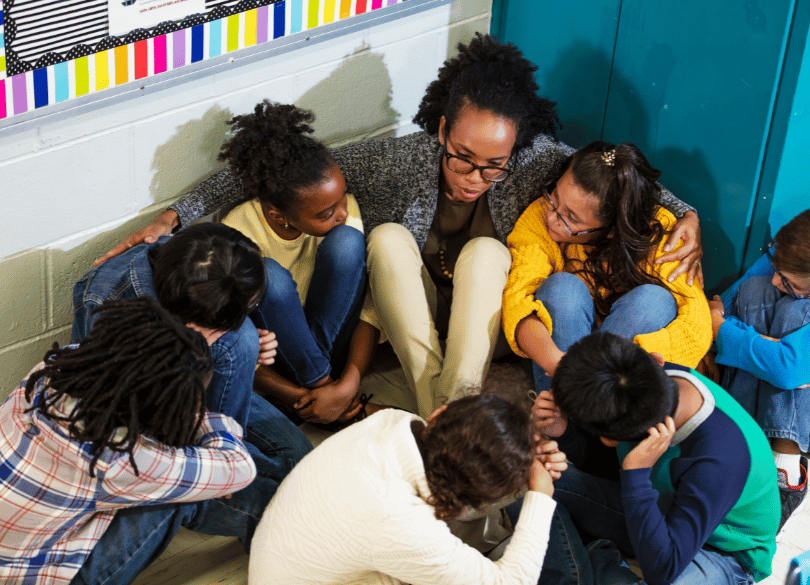Why Active Shooter Drills Cause More Harm Than Good
While we have to take the potential risk for danger, however small, very seriously, we also should remind ourselves: we don’t know if they’re effective and we know that they can cause psychological harm for children and for teachers.
COOPER TEAM • AUG 9TH, 2023

95% of American public schools run active shooter drills regularly, according to the National Center for Education Statistics. Are they even effective at keeping kids safer? Do they cause more harm than good? You have questions. Here’s our take.
What do active shooter drills look like?
There is wide variation in how schools carry out active shooter drills, with some taking them way too far. In Indiana in 2019, elementary school teachers reported that local law enforcement officers had them kneel against a wall and then proceeded to shoot them with an airsoft rifle from close range, leaving them with welts and bruises. In California, a janitor wearing a mask and brandishing a fake gun intentionally frightened teachers and children by banging on classroom doors. At a Florida high school, a live shooter drill led students to pass out, vomit from fear, and send text messages to their parents saying goodbye.
These incidents are horrific and go way too far. The intent to keep children safe is lost when the drills themselves are inflicting trauma on everyone involved. If we have drills like these, school psychologists must be involved in their planning.
The drills at my child’s school aren’t that extreme.
Many schools have lockdown drills that involve students having to be quiet and hide somewhere out of sight. While these types of drills aren’t as extreme as other incidents, it’s still worth reflecting on their value and how they can impact children psychologically.
What do we know about the psychological implications of live shooter drills?
Research has found that live shooter drills often lead students to be much more afraid, have an inflated perception of the risk of a school shooting, and feel unsafe at school. A frightening experience like a live shooter drill can increase a child’s risk of anxiety, depression, behavioral issues, fear of school, and a host of other problems.
Do they even work?
It’s very difficult to test if active shooter drills actually keep kids safer. It would NEVER be ethical to test the effectiveness of school shooter drills in a controlled experiment. The potential for psychological harm to the children participating in the study would be too great, and there are too many real world variables that can't be anticipated for an experiment.
However, the evidence that we do have suggests that they aren’t keeping kids any safer. Safe Havens, a school safety non-profit, found that people who go through lockdown safety training consistently performed “worse than people with no training whatsoever." Going through lockdown drills can increase fear and the potential for panic in the event of a real emergency.
How should teachers be handling these drills?
Teachers handle drills like these differently, depending on the age of the kids in their classroom. For younger children, they might approach it like a game to minimize their students getting frightened. However, there’s no one “right” way for your child’s teacher to approach active shooter drills in the classroom.
If we don’t know if they work, should we have active shooter drills at all?
Schools are generally safe places for kids. Although media coverage of school shootings can make it feel otherwise, the statistical likelihood of a child being killed by a gun in school is extremely low at around 1 in 614 million.
While we have to take the potential risk for danger, however small, very seriously, we also should remind ourselves: we don’t know if they’re effective and we know that they can cause psychological harm for children and for teachers. Is the psychological damage of undergoing live shooter drills every school year the best way to keep kids safe?